We provide here summary plots from HPQCD’s calculations that demonstrate the physics impact of lattice QCD. We also include world summary plots where appropriate.
Quark masses and coupling constant
HPQCD has pioneered the accurate determination of quark masses and strong coupling constant using lattice QCD calculations. Lattice QCD gives direct access to the quark mass and coupling constant parameters in the QCD Lagrangian and so provides an optimal technique for their determination. To tune/fix these parameters requires experimental input and the accurate determination of appropriate meson masses (one for each quark mass being tuned) and of a quantity that can be used to fix the lattice spacing (another meson mass or decay constant such as that of the $\pi$ meson). This tuning can now be done very accurately (with well below 1% uncertainties) in modern lattice QCD calculations. The issue that determines the final uncertainty is that of converting the result from the regularisation of QCD used in lattice QCD to that of a continuum scheme, such as the $\overline{\text{MS}}$ scheme.
The figure below shows a summary of lattice QCD results for the determination of $\alpha_s$ in the $\overline{\text{MS}}$ scheme at the $Z$ boson mass, taken from HPQCD’s recent paper, [1]. HPQCD’s results compare two methods - one from using heavyonium correlators compared to high-order continuum QCD perturbation theory in the $\overline{\text{MS}}$ scheme [2, 3] and one from the comparison of Wilson loop values to high-order lattice QCD perturbation theory[3, 4]. Good agreement between all the lattice QCD methods is seen. A weighted average of the lattice QCD results is given by the grey band: 0.1185(4).
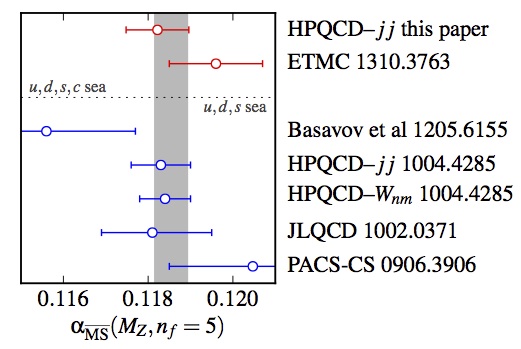
A feature of QCD is the running of the coupling constant as a function of energy scale/distance. Below we show this running explicitly, determined from HPQCD calculations using Wilson loops in [4].
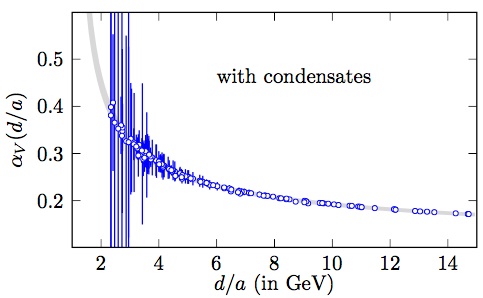
The figure below shows a world summary of determinations of the $b$ quark mass using lattice QCD. The results are given in the $\overline{\text{MS}}$ scheme at a scale equal to the mass. The plot is given in [5] where the improved NRQCD action was used and also shows results from two different methods using HISQ quarks in [3] and [1], and a different method using NRQCD quarks in [6]. The weighted average of all the results is given by the grey band: 4.184(15) GeV.
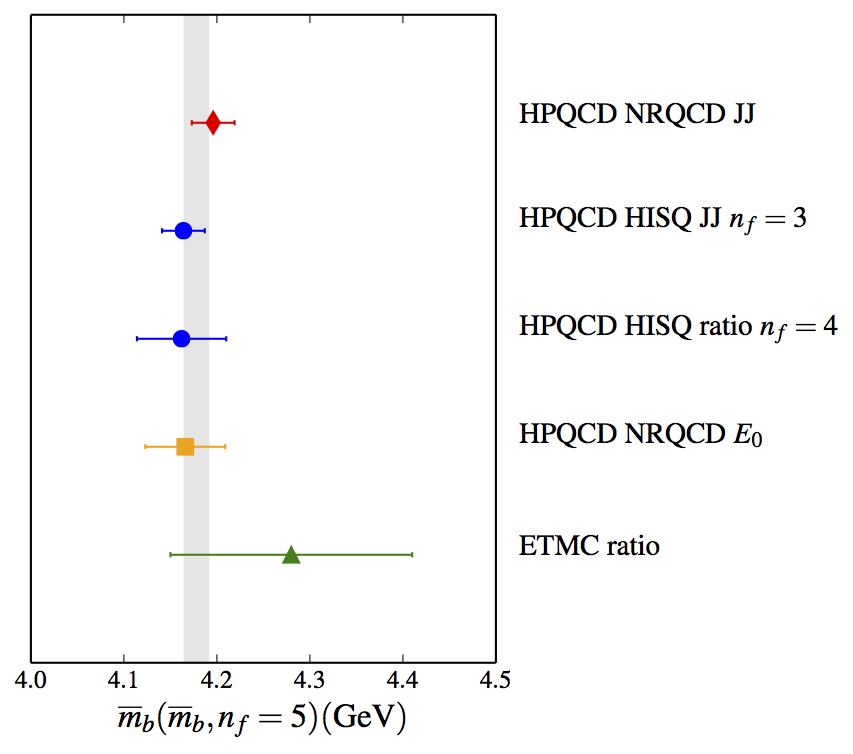
We can directly and accurately determine the ratios of quark masses in lattice QCD, giving information that is not obtainable in other approaches. Below we show our recent results [1] for the ratio of the charm to strange quark mass obtained using the Highly Improved Staggered Quark action for both. In the continuum and chiral limits this is equal to the ratio of the $\overline{\text{MS}}$ masses of these two quarks at the same scale [7].
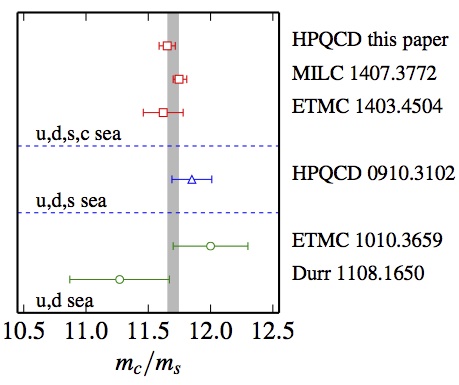
Since the charm quark mass can be determined very accurately in lattice QCD using charmonium current-current correlators and high-order continuum QCD perturbation theory [2], an accurate determination of the quark mass ratio above can be converted into an accurate determination of the strange quark mass. In this way we can now achieve sub-1% uncertainties on the s quark mass. Below we show a summary of lattice QCD results for the strange quark mass in the $\overline{\text{MS}}$ scheme at a scale of 3 GeV from [1]. The grey band gives the world average of these results: 84.1(5) MeV.
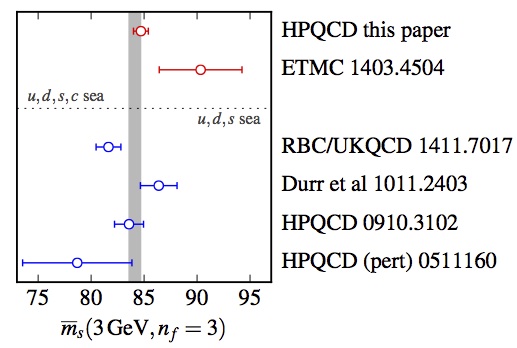
Lattice QCD can provide interesting and precise physics information about heavy quark masses by filling in the region between the charm and bottom quark masses that are the only ones accessible to experiment. The plot below shows the ratio of the pseudoscalar heavyonium meson mass to twice the quark mass in the $\overline{\text{MS}}$ scheme at a scale $\mu$ as a function of the heavy quark mass (using as a proxy the heavyonium mass). The curve for $\mu$ equal to the heavy quark mass is surprisingly flat and close to 1 for the full range from charm to bottom.
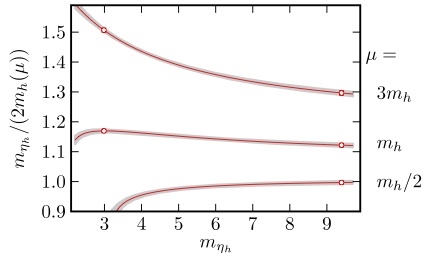
References
- [1] arXiv:1408.4169
- [2] arXiv:0805.2999
- [3] arXiv:1004.4285
- [4] arXiv:0807.1687
- [5] arXiv:1408.5768
- [6] arXiv:1302.3739
- [7] arXiv:0910.3102